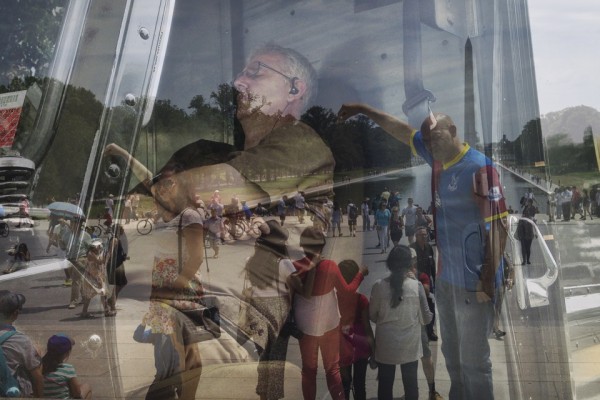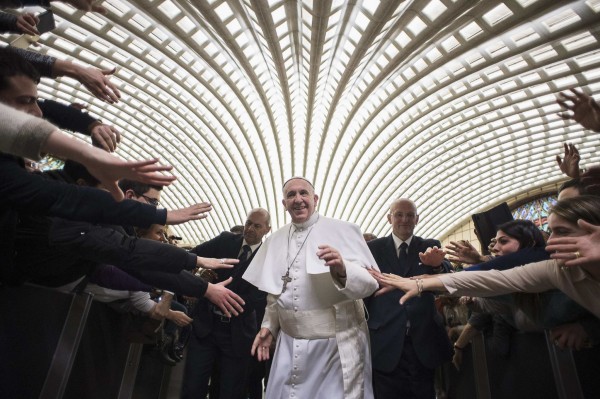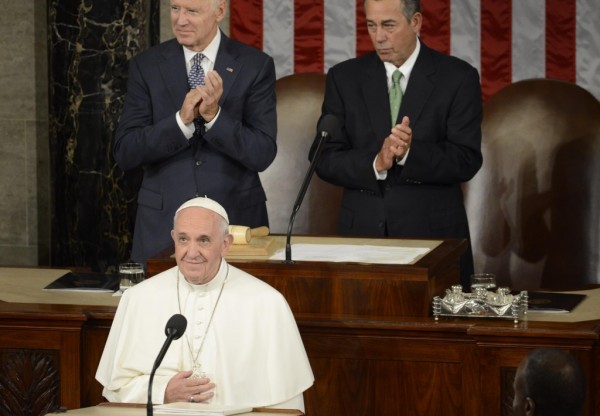Notes
From D.C., and The Atlantic / Echosight Project: Mashing the American Dream
Inspired by the charged but ambiguous term, “the American Dream,” this post is based on a photo project between Echosight and The Atlantic to create complex visual statements by merging submitted photos.
click for full size
The pictures in “Photographing the American Dreamers” that I found most arresting were the ones where it wasn’t quite clear—at least at first glance—which piece of the mash-up corresponded to the photographer’s commentary published below it. In such photographs, it’s a little hard to tell what’s going on, which piece belongs where, and the scenes converge into new wholes. That’s the magic of the mash-up: possible dreams, juxtaposed.
In this photograph and caption pairing, that sense of visual juxtaposition and visual possibility is especially strong because the commentary provided by photographer Nili R. Blanck also mashes up different versions of the American Dream. The story of American exception is there—critiqued, but also left whole. Those unique, amazing individuals who are “products of their own creativity and persistence” are part of the American story, Blanck admits. But she wants us to focus on another American story and bring American Dreams more in touch with American reality. She wants us to see people who get things done as best they can, who work two jobs and still can’t afford a mortgage, who hold their neighbors’ hands in times of crisis as American dreamers too.
Those two dreams, the extraordinary and the everyday, sit side-by-side in Blanck’s commentary and in the mash up. There’s the grand Washington Monument off in the distance, but it’s obscured by the seatbelt, by the truck door, and by the man and woman standing on the steps of the Lincoln Memorial who reach out to grasp it between two fingers. Standing there and reaching for greatness, they in turn interrupt the everyday family photograph in process behind them. Meanwhile the man sleeping in the delivery truck interrupts them all. Is he on break from a union job that would once have secured him a shot at that exceptional American Dream? Or is he just getting by, aiming not for the exceptional but for his own life, lived?
Thematically speaking, the mash up asks us to wrestle with multiple strands of the American Dream. The visitor-packed National Mall and the delivery truck both remind us that America has long imagined itself as a nation on the go—expanding westward as pioneers and then traveling the national landscape as tourists. The solitary white man in the truck and the multi-racial crowd gathered below the Lincoln Memorial evoke two different, competing versions of who embodies ideal American-ness. The scene of labor in the truck photograph and the Mall’s patriotic space in the other likewise call to mind two ways of measuring and valuing national pride. These juxtapositions are especially interesting in a thematic sense because the details of each photograph also undermine the national myths they perpetuate.
The possible protagonists of the photographs—the man in the truck and the man and woman in the foreground of the monument photograph—are compromised. The truck driver, instead of embodying the self-sufficiency and rugged work of the ideal American laborer is caught at rest, reclining with arms crossed and ear-buds firmly in place. In the monuments picture, what might once have been a clever gesture (using a trick of perspective to ‘grab’ a distant building) becomes commonplace as the two foreground figures try it simultaneously but for separate photographs. Likewise, from our angle, even their commonplace cleverness fails; the Monument evades their grasp, undisturbed by their clutching fingers. It’s also hard not to imagine how silly they will look in the background of the family photograph being composed behind them. We can almost hear a friend asking, incredulously, “What are those people behind you trying to do?”
These are iconic American scenes, yes, but like Blanck’s words, they remind us that we generally inhabit such scenes in the most unremarkable of ways.
The visually challenging composition re-echoes those thematic challenges to the American Dream. The mash-up seems to be going in two directions at once, and so it repeatedly juxtaposes the verticals of the exceptional dream with the horizontals of the everyday dream. The most prominent verticals are in the delivery truck photograph; the lines of the truck body, the seat belt, the windshield, and the driver’s slight recline all point us upward. There are significant verticals in the monument photograph too, though. Not only do the arms of the tourists in the foreground and spire of the Washington Monument in the background direct attention to height, but that photograph also provides an expanse of open sky that gives vertical movement extra meaning: the sky’s the limit! Greatness awaits!
Despite the eruption of all those verticals, however, the horizontal frame of the monuments photograph is distinctly powerful. The lines of the reflecting pool and its flanking trees pull us into the distance and the crowds of people on the plaza of the Lincoln Memorial keep us very much tethered to the ground.
For those of us familiar with the visual history of the National Mall, there’s also no forgetting that the horizontal wound of the Vietnam Veterans Memorial lies just beyond the left edge of the photograph, that Marian Anderson and Martin Luther King Jr. stood nearby, that the AIDS Quilt once filled the grass before us. Those horizontal lines and the spatial history they evoke remind us that “We the People” has always been a fraught proposition. Not everyone has dreamed the same American Dream.
— Christa Olson
photo: Ali Kate Cherkis / Nili R. Blanck / EchoSight / The Atlantic.



Reactions
Comments Powered by Disqus